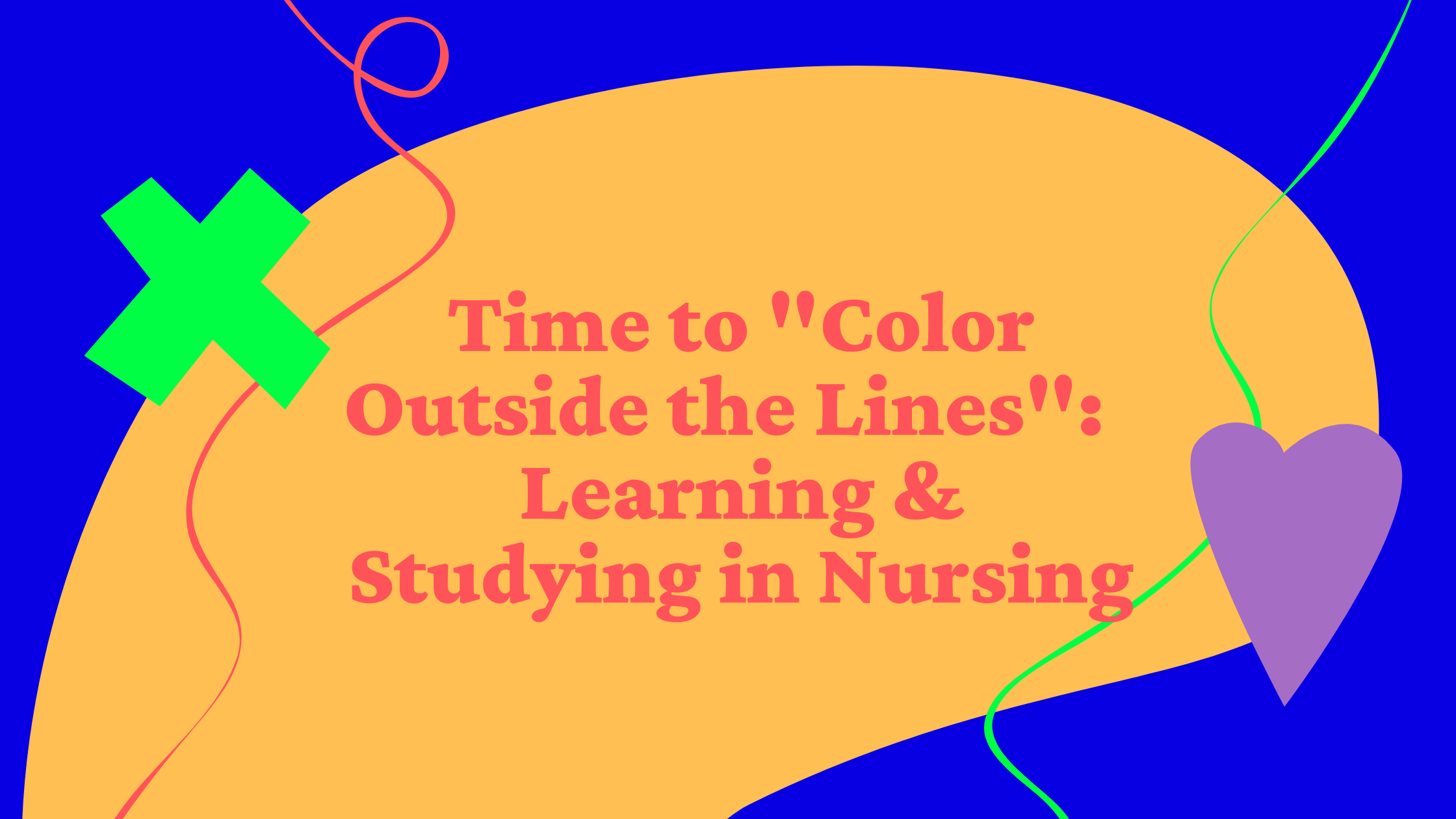How to swallow a mountain 101 – Nursing School Studying and Retention Tips
One of the most common complaints my nursing students and former classmates (when I was in nursing school) is that there is just too much information to read, review, and retain in nursing school. And well….. it’s true…
(GIPHY)
Personally, I had to try different things for the first 2 semesters of nursing school before I “found my groove”. Thankfully, during orientation at my nursing school, we were instructed to take a learning styles test to help us configure study methods that would be most beneficial for us as individuals.
At the time I thought the test was a waste of my limited time, but boy was I wrong. That test set me on the path for success.
Here’s a link to a good learning styles test you could try. It’s pretty quick (20 short questions): Learning Styles Test
So once you learn your learning style, you can begin establishing a foundation for success.
There are 3 main learning styles plus 1
Auditory - Learn especially well by hearing things or talking things through.
Visual - Learn best through visual cues, images, and videos.
Tactile - These are the “learn by doing” people. Benefit from hands on activities.
Multimodal - a mix of 2 or more learning styles. Most people are multimodal, at least to an extent.
So let’s see how we can apply these to studying and retaining content in nursing school.
In nursing school, there is a crap ton of reading to do. 1 chapter is often 30-40+ pages, and your instructor will say they want you to read 3 or 4 chapters to be prepared for lecture the next day…. Say what???
(GIPHY)
How can each learning style complete the mountain of reading without sacrificing all your sleep and family/personal time???
General tips:
Skim read before lecture. Get a basic understanding of the content.
Most book chapters list chapter learning outcomes and objectives. Use those objectives to guide your skim reading. Many times the objectives make up the subtitles in the chapter.
During lecture, follow along in your book, highlight or write down topics discussed and review that content, in more detail after class. Use lecture to refine what is most relevant for your upcoming check-off or test.
Use some of those “nursing made easy” reference books as a complementary method to give you a clearer understanding of complex material or elongated chapters.
For example, I used Medical-Surgical Nursing Demystified as a pre-lecture overview and skim read my chapters, when I was in nursing school. The next day in lecture, I was able to ask relevant questions and discuss the content.
Blending learning style techniques is often most beneficial. For example, taking notes when listening to lecture or drawing a doodle that will remind you of content you heard in lecture or saw in your reading.
Auditory:
1 obvious option is listening to and audio version of your book, if available.
Recording lecture, if permitted, can allow you to pay closer to attention to lecture, rather than being bogged down in an attempt to scribble notes that will only be of marginal benefit to you later.
Reading your highlighted content, aloud, can help with retention, especially when you know what content to focus on after your lecture or PowerPoint.
Study with background music. Research highlights the benefits of background music when studying or needing to be productive, even rap music has some benefits (I’m partial to Notorious BIG and coffee when I need to focus).
(GIPHY)
Khan Academy Drawing Video and talking lectures. This is an amazing free resource, especially when studying for your prerequisite and hard science courses.
Study with a study group, using active discussion.
Visual:
Doodling Can actually help you to recall content. Yes, it’s true, and I have Harvard Reported Research to prove it!
My one caveat would be to make the doodle relevant to the material . Let the doodle act as a trigger for an important point. For example, I may doodle a heart, lightning bolt and a pill capsule to signify defibrillation and meds beside the words ventricular fibrillation.
Concept maps. These visual tools helps you break down larger concepts into smaller bubbles and see how they relate to the overall topic. Here is a great example of a concept about CVA (stroke).
This book…. Memory Notebook of Nursing
Also, YouTube and Khan Academy are your friend, especially for hard science content, like biology and anatomy and physiology….
Tactile:
Jog or exercise as you listen recorded lectures or audiobook versions of your school textbooks.
Take handwritten notes.
Flash cards
Think of how to relate what you reviewed or learned to an experience you had in clinical.
Chew gum, but for the life of me, please don’t smack, if your around others! Lol!
Create and outline of topics discussed in lecture or in reading.
Study with a study group, using active discussion.
Somethings to remember:
What works for you and what works for others may not always be the same.
It’s not uncommon for one study technique or method to work well certain content and not so well for other content.
For example, flash cards make help some people in learning vocabulary, but not how to use the word in a sentence.
Don’t be afraid to change things up periodically. Every semester during nursing school, I made adjustments and refined my study methods, and I continue to do so now, in graduate school.
Don’t be embarrassed to ask for help or remediation. Also don’t be hesitant to find a reputable and qualified tutor.
Always use secondary resources as a compliment to the resources established for your course. This means don’t ignore your prescribed reading and rely solely on quick reference material, such as the Demystified series I mentioned earlier.
Many instructors base their quizzes and test off of the specific information in PowerPoints and assigned textbooks.
Communicate with your course instructor about content you are not understand and ask for resources.





